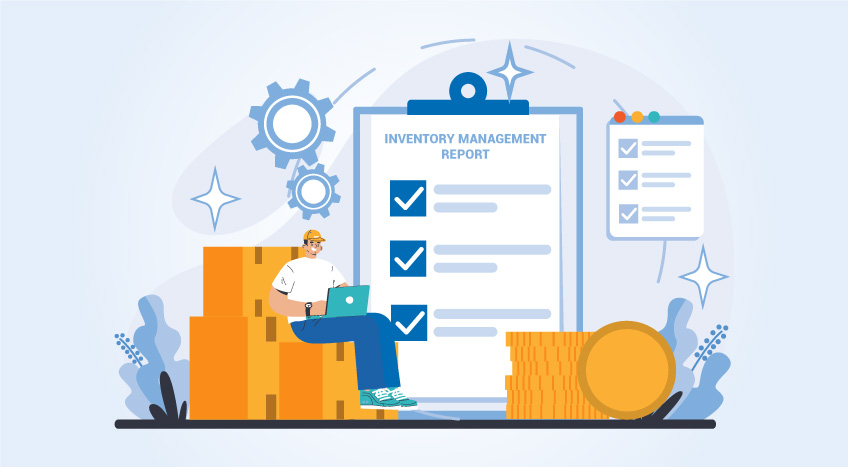Imagine keeping a record of your business inventory using a pile of papers, hand counting the existing stock levels, and manually placing orders for your inventory.
If you are like most businesses, you will throw this idea out of the room. It works but is no longer practiced. Why? Because it is cumbersome and outdated. Smart businesses use inventory management systems for this.
Inventory management software can make this task not only easier but also more accurate through automation. With a robust business inventory management system, you can simplify the whole process of ordering, stocking and managing your inventory.
In this blog, we will discuss inventory management systems in detail. Let’s dive in:
A brief on inventory management systems
An inventory management system is a tool that helps businesses automate and manage their supply chain–right from product procurement to fulfilment.
Businesses need a good inventory management system to track and manage its inventory accurately. Without a proper business inventory management setup, your business will run on an ad-hoc basis. In no time, your business will run into conditions where it is under or over-stocked.
With a robust inventory management system, you will be well aware of the stocks that need to be updated, procured, and managed so that customer demands are met without hiccups.
Types of inventory management systems
While there are various types of inventory management systems, here is a list of some of the most preferred and commonly used inventory management systems:
Just-in-time inventory management
Just-in-time (JIT) inventory management aims at keeping both costs as well as waste as low as possible. In this type of inventory management, exactly that amount of inventory is mentioned that is needed to meet the product demand. The basis of this type of inventory management system is delivering supplies as and when required i.e. just in time.
Radio frequency identification
Radio frequency identification (RFID) is an inventory management system where a wireless tracking system keeps a record of the goods and products through a unique serial number assigned to each product.
A business that uses an RFID inventory management system can have complete visibility of the inventory stock–whether to accumulate or release inventory. Furthermore, it guarantees easy tracking, receiving and delivery of stocks.
ABC inventory management
ABC, also called “always better control” is an inventory management setup where different categories of inventory or stock are graded as A, B and C where the categorization is based on pricing, demand for the product, risk and cost.
High priority or most important inventories are classified as A. The second most important set of stocks is classified as B. The least important inventory set is classified as C. This method of inventory management allows better forecasting, identifies which products are to be better stacked and optimizes inventory distribution as per the demand.
Cross-docking
Cross-docking is one of the best inventory management systems for perishable items. In this type of business inventory management, goods and products are transferred from inbound vehicles to outbound vehicles. This ensures there is no need for separate storage bandwidth. The demand-supply dynamics are realized instantaneously. Apart from meeting the demand on time, the cost of storage also comes down to zero.
Features of inventory management system
While we have discussed only 4 inventory management systems, there exist several other variants of inventory management. To help you make the right selection, below are some of the common features of the inventory management system. These features are some of the primary considerations that you should factor in while choosing an inventory management system –
- Better time management: An inventory management method or software should help you better manage time. This means the time required to track, manage and deliver inventory should be optimized, i.e. should be less than before.
- Better inventory control: The inventory management system that you choose should allow you to have complete transparency over the inventory status of the business and thus higher control over it.
- Quality forecasting: A good business inventory management system should provide accurate data on the amount of inventory that your business should have. Whether to procure more stock or hold on, it should offer these details consistently.
- Better integration of interfaces: Another basic feature of an inventory management system is that it should better integrate the different levels or interfaces of your business’s supply chain. From putting orders for different categories of stocks to ensuring that there is no gap between different supply levels, it should manage and integrate different supply chain interfaces.
Bottom line
Inventory management systems make inventory tracking, procuring and delivery not only smooth but far more efficient. There are different types of business inventory systems that you can choose from. Just be mindful that the chosen inventory management system improves your time management, better inventory control, and accurate inventory forecasting.










